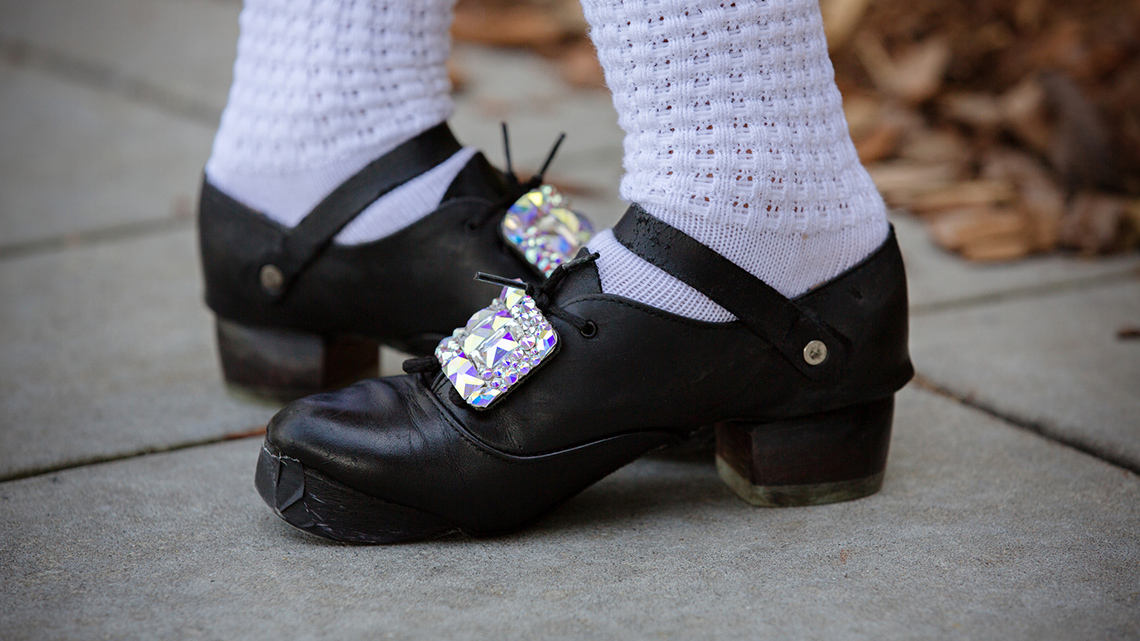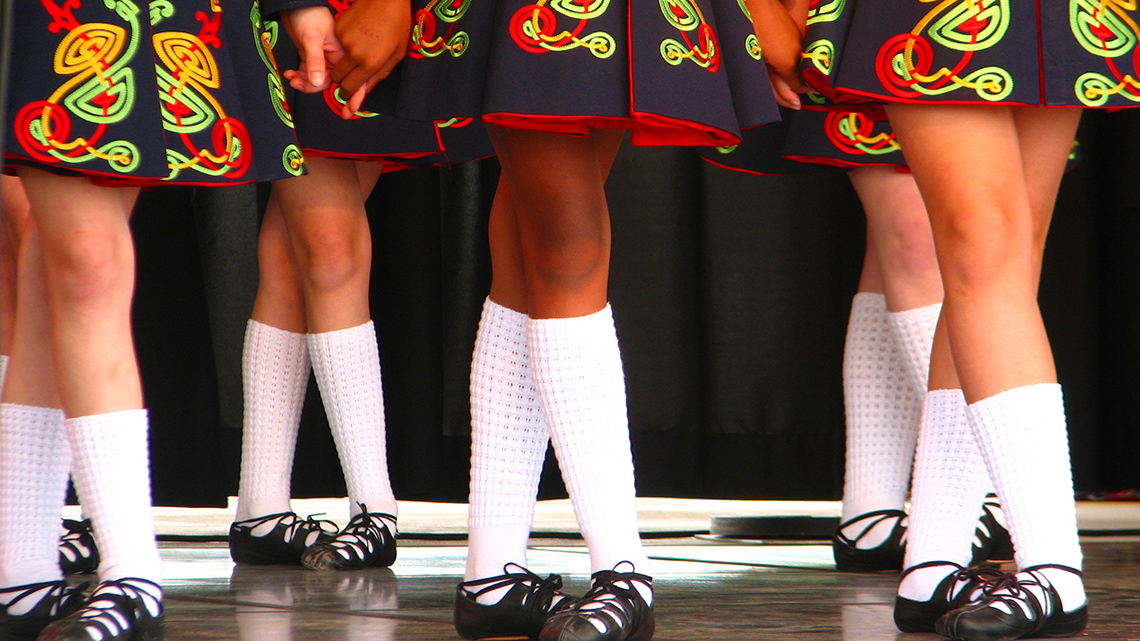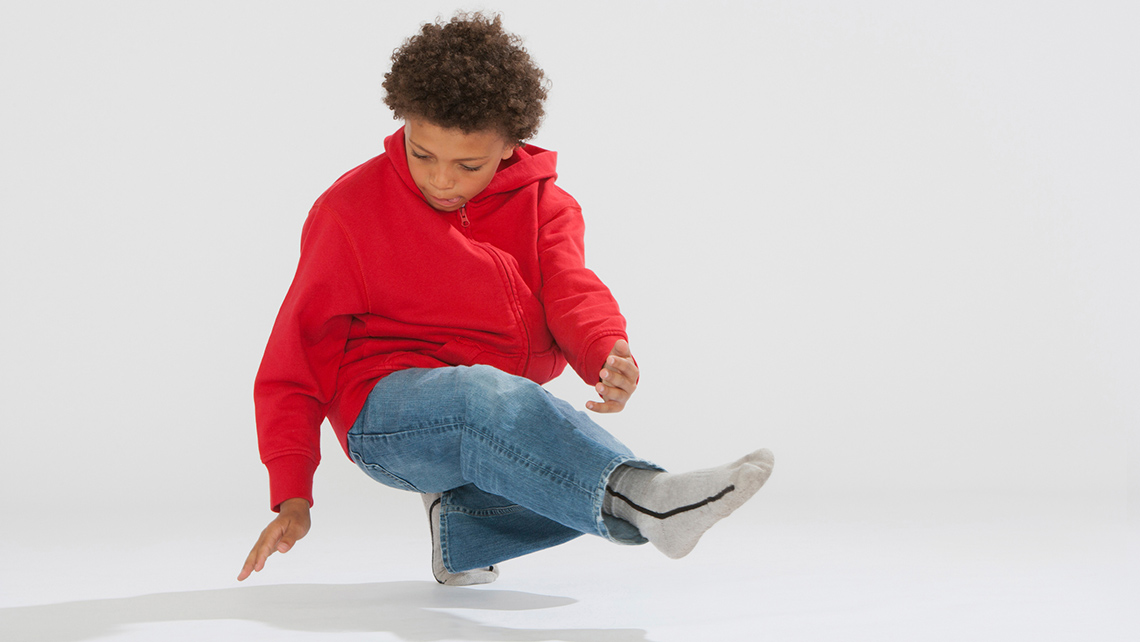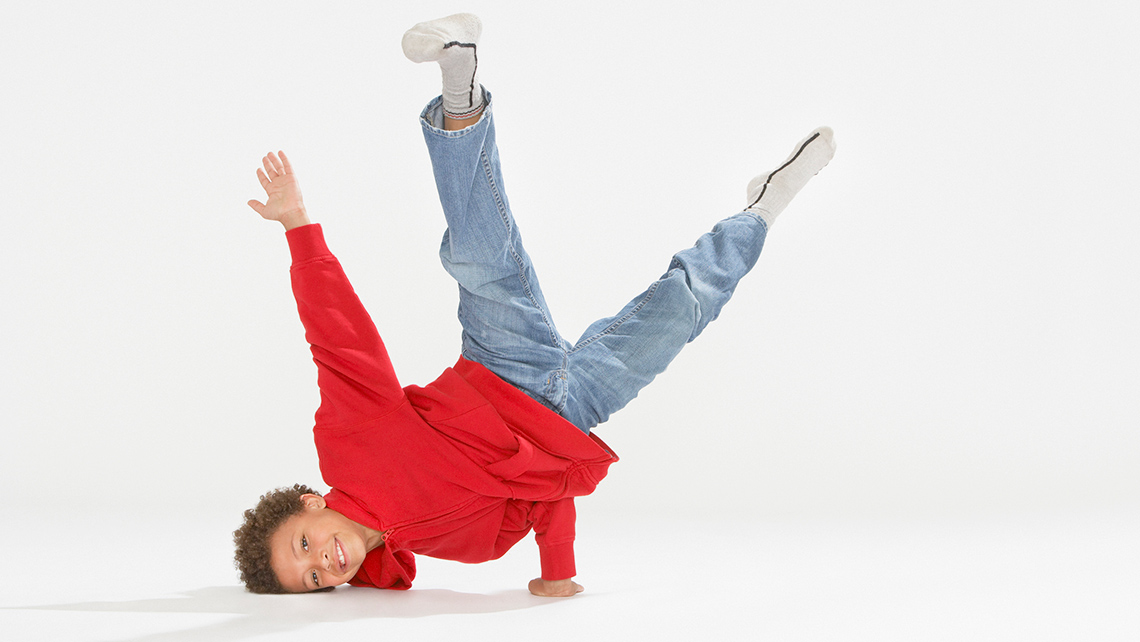Minds On
Today’s vocabulary
Press the following tabs to access today’s vocabulary.
Important ideas in dance, which include the following:
Body: The instrument of dance. The term body may also describe the body’s position or shape (e.g., curved, straight, big, and small); also, how the body is moving (e.g., using locomotor or non-locomotor movements).
Energy: The force or power with which the body moves (e.g., heavy/light, sharp/smooth, tight/loose).
Relationship: The way in which dancers move with other dancers, objects, or props (e.g., together, in front of, behind, inside, or around).
Space: The space in which the body moves; includes the area around the body and the larger dance space.
Time: an element of dance which includes rhythm, tempo, accent, and duration.
- rhythm–patterns of movement and rest
- tempo–how fast or slow a movement is performed
- accent–a strong movement or gesture used to create emphasis or focus
- duration–how long a movement lasts
The instrument of dance. The term body may also describe the body’s position or shape (e.g., curved, straight, big, and small); also, how the body is moving (e.g., using locomotor or non-locomotor movements).
The space in which the body moves; includes the area around the body and the larger dance space.
An element of dance that includes rhythm, tempo, accent, and duration.
- rhythm–patterns of movement and rest
- tempo–how fast or slow a movement is performed
- accent–a strong movement or gesture used to create emphasis or focus
- duration–how long a movement lasts
The force or power with which the body moves (e.g., heavy/light, sharp/smooth, tight/loose).
The way in which dancers move with other dancers, objects, or props (e.g., together, in front of, behind, inside, or around).
The part of the body that is supporting the rest of the body. When someone is kneeling, for example, the knees are the body base.
Let’s get started!
Let’s explore a dance.
Explore this video entitled “Emily” to learn more about a Mohawk dancer, from Kahnawake First Nation performing the Hoop dance.
Think about the following questions:
- What kinds of movements did you notice Emily doing in the video?
- Did the dance remind you of any other types of dances you have experienced?
Action
Get ready, get set…
Task 1: Hoop dance

Two teachers are having a conversation. The first teacher says, “There are five elements of dance. They are body, space, time, energy, and relationship.” The second teacher responds, “We use all the elements when we create a dance.”
Press the following tabs to access the different elements of dance.
What is your body doing?
What body zones are you using?
 Description
Description
Three images showing three different body zones that can be used while moving our bodies. First image shows upper body movement. A figure is raising their hands. Second image shows lower body movement. A figure is bending their knees. Third image shows only one side of the body movement. A figure is raising one hand and one foot on one side of their body.
What different body parts can you move?
 Description
Description
Three images showing the different body parts that can be moved. First image shows a figure that is moving their arm. Second image shows a figure that is moving their leg and the last image shows a figure that is moving their head.
What kinds of shapes could you make?
Shapes with straight lines (angular shapes).
 Description
Description
An image showing that we can use parts of our bodies to make straight lines. We can hold out our arms in straight lines and stand with our legs straight.
Shapes with curved lines (curved shapes)

What locomotor movements could you do?

What non-locomotor movements could you do?

What different body bases could you use to create a shape with your body?
 Description
Description
Four people are each using a different body base to create a shape with their body. The first person is using one foot as a body base. The second person is using their two feet as a body base. The third person is using their hands and feet as a body base. The fourth person is sitting on the ground and using their bottom and feet as a body base.
Where is your body moving?
What different levels could you make?
 Description
Description
Three people are moving their bodies at different levels. The first person is moving their body at a high level. They are standing and waving their hand. The second person is moving their body at a medium level. They are squatting. The last person is moving their body at a low level. They are sitting with their legs crossed.
What different pathways could you travel?

What different directions could you travel in?

Check out this audio clip/recording entitled “Dances Carry Teachings” to learn more about what dances, in some cultures, mean.
Dances Carry Teachings
Different styles of dance use and combine the elements of dance in different ways to create unique styles of dance. Let’s explore the movements in the Hoop dance to identify how Emily uses the elements of dance.
Body
 Description
Description
A teacher, with a speech bubble, is saying, "The first element of dance is Body. Body is the instrument of dance. It refers to the body's shape and how the body is moving."
How was Emily using the element of body in her dance?
Press ‘Element of Body’ to access how body is used as an element of dance.
Emily used her whole body to create shapes that represented different things from nature, such as a flower, a butterfly, and an eagle. Many of her movements used non-locomotor (on the spot) movements.
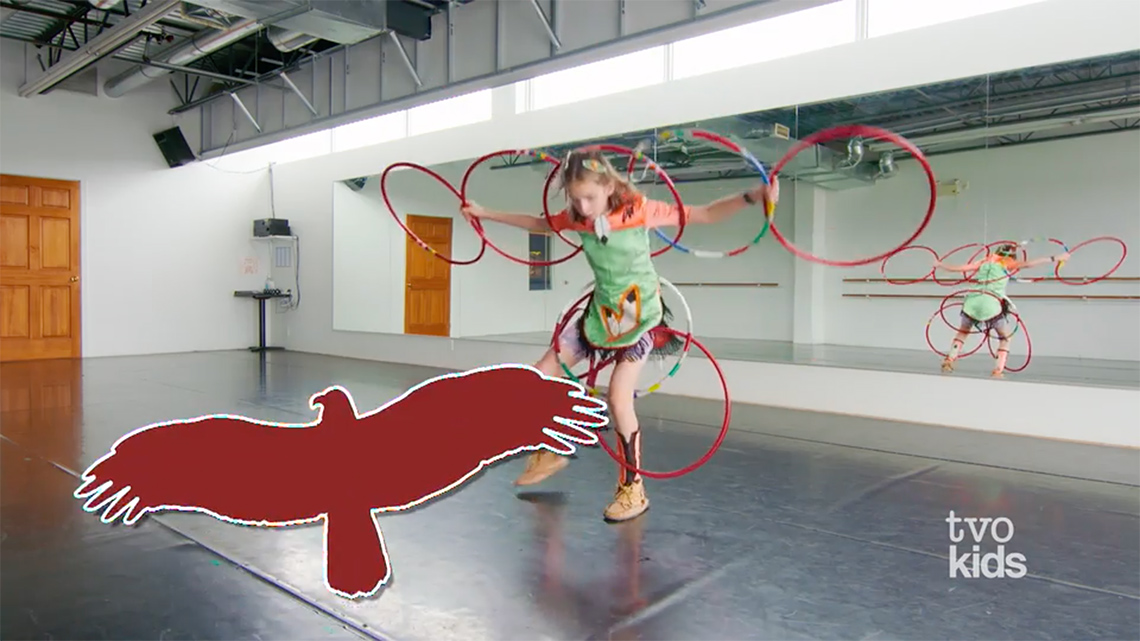
Emily dancing with hoops. Emily uses her whole body while forming an eagle. Five hoops are joined behind her back and arms. Emily is bending slightly forward with her knees bent. She is looking downwards with two more hoops around her legs.
Space

How was Emily using the element of space in her dance?
Press ‘Element of Space’ to access how space is used as an element of dance.
Emily used mostly high levels when she danced. She often changed the direction of her movements. Sometimes she danced facing the camera. Sometimes she danced with her back to the camera.

Time

A teacher, with a speech bubble, is saying, “Time is the element of dance that is most like music. It involves things like the tempo (how fast or slow a movement is) and duration (how long it takes to do a movement).”
How was time used in Emily’s dance piece?
Press ‘Element of Time’ to access how time is used as an element of dance.
Emily changed the tempo of her movements, so she was like the piece of nature she was creating. She moved quickly when she was the butterfly’s wings. She moved more slowly when she was the flower.
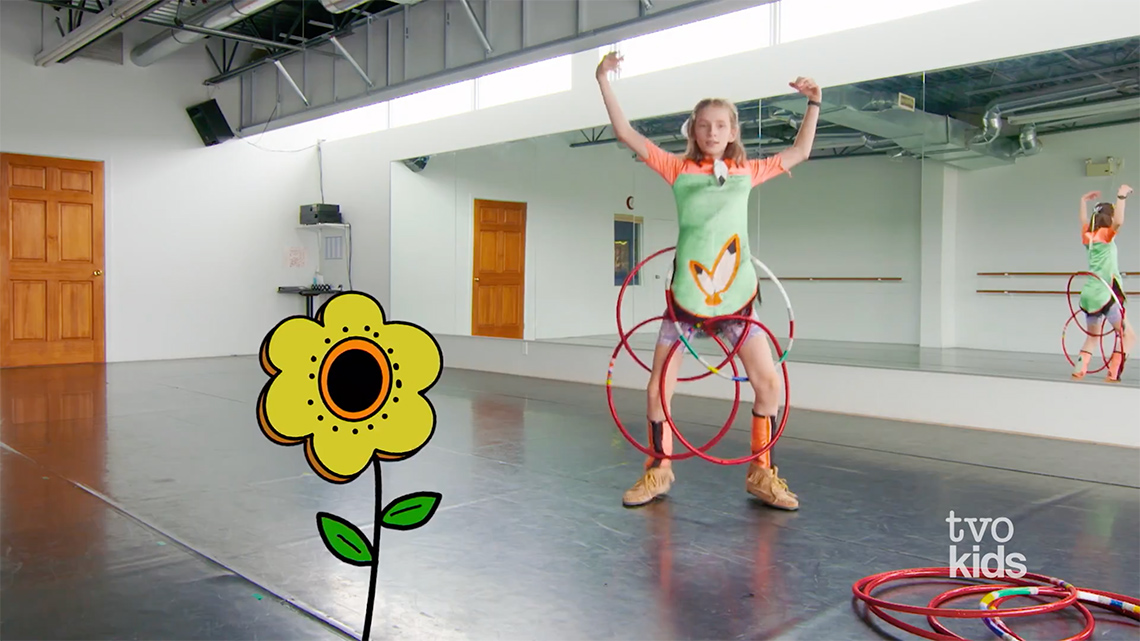
Emily dancing in a studio. Emily is using the hoops to form a flower. She has two hoops around each leg. The top hoops on each leg also go around her hips. It looks like the five hoops are all connected. Her hands are raised.
Energy

A teacher, with a speech bubble, is saying, “Energy is about how the movement happens. It can be quick and sharp like a bird diving into the water after a fish. Or it can be heavy and slow as if you were trying to move your body through the mud.”
How did Emily use the element of energy in her dance piece?
Press ‘Element of Energy’ to access how energy can be used as an element of dance.
Like the element of time, Emily matched the energy of her movements with the piece of nature. Her movements were smooth and steady when she was the eagle. Her movements were light and gliding when she was the butterfly.
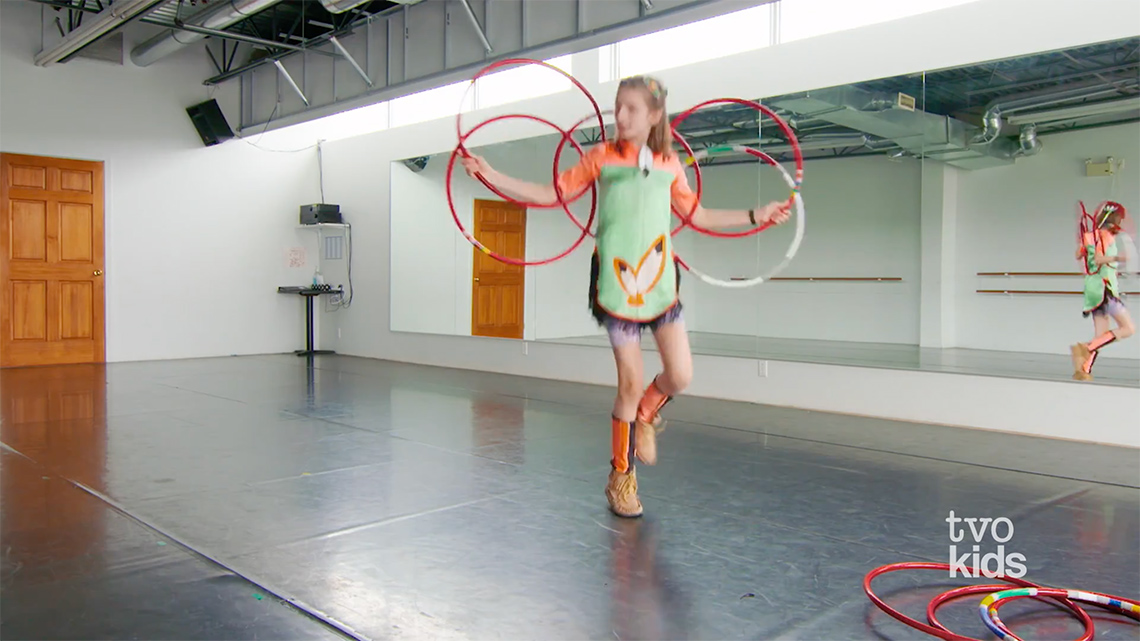
Emily dancing in a studio. She is using the hoops to form a butterfly. She has five hoops behind her back and along her arms. Her arm are raised.
Relationship

A teacher, with a speech bubble, is saying, “Relationship is the way things are connected in dance. For example, how two dancers are connected to one another, the relationship between two body parts, or how a dancer is connected to a prop.”
How did Emily use the element of relationship in her dance piece?
Press ‘Element of Relationship’ to access how relationships can be used as an element of dance.
Emily’s relationship with her hoops is the most important part of the dance! She uses the hoops as an addition to her body to create shapes that are like things in nature. The hoops also work in relationship to each other. Sometimes they are joined to create different shapes.
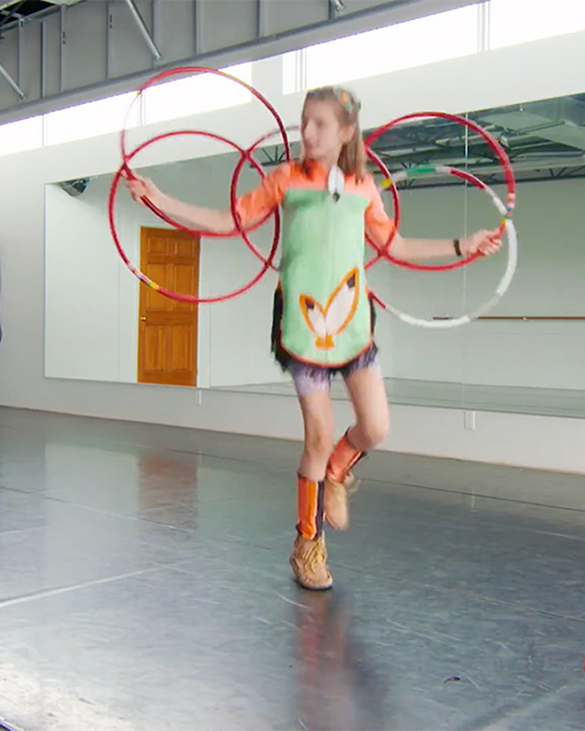
Emily dancing in a studio. She is using the hoops to form a butterfly. She has five hoops behind her back and along her arms. Her arms are raised.
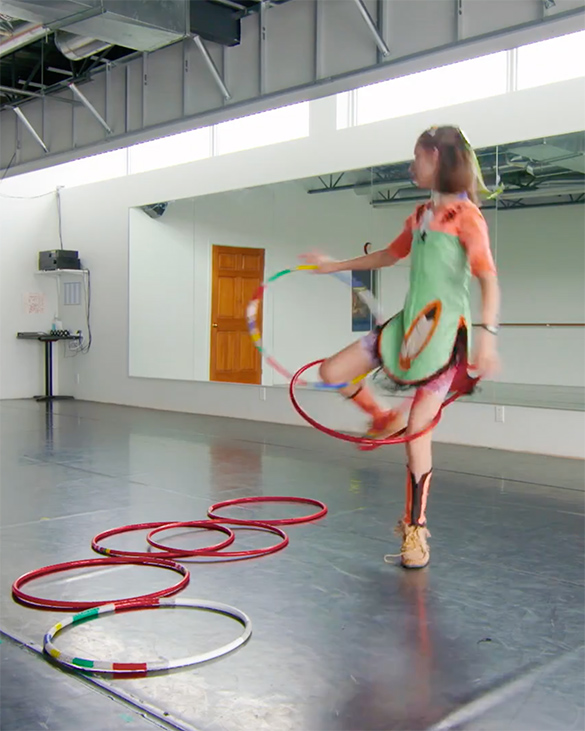
Task 2: Exploring dances from communities around the world
Emily showed us one dance style practised by many different Indigenous communities, but there are many dances from communities around the world to learn more about. Let’s explore some more.
Irish step dancing
Irish step dancing is a type of Irish dance. It started over 200 years ago. It was like traditional Irish dance, but different! It became popular in the 1990s because of the dance show, Riverdance. In Irish step dancing, dancers keep their upper body still. They dance quick step movements with their feet. Dancers dance on their own (solo) or in groups.

Two teachers are talking. The first teacher says, “There are two types of shoes worn by Irish step dancers. Hard shoes, similar to tap shoes.” The second teacher responds, “And soft shoes called Ghillies, similar to those worn by Highland dancers.”
Let’s explore an example of Irish step dancing. Examine how the dancers use the elements of dance!
Explore this video entitled “O’Rourke Irish Dancers” to learn more about the Irish step dancing.
Breakdancing
Breakdancing was created in New York City. It was started by Black and Latinx communities almost 50 years ago. It became popular around the world in the 1980s and is still popular today. Break-dancers use different movements that are mostly at a low level – close to the ground. Dancers often use unusual body bases like their backs or their heads. These help them hold their moves. Break-dancers usually wear regular, baggy street clothes that are easy to move in.
Lion dance
The “Chinese Lion Dance In Spring Festival Temple Fair” is a traditional Chinese folk dance. It is usually danced during the Lunar New Year or at other important cultural events. The Lion dance is usually performed by two dancers. One person moves the head of the lion costume and the other moves the back. Together, they act out the movements of a lion. This dance is done to bring good luck. It is usually performed to a strong drumbeat.
Explore this video entitled “Chinese Lion dance In Spring Festival Temple Fair” to learn more about the Lion dance.
Go!
Task 3: Description matching
Which elements of dance are used in each dance style?
Match the dance style with the elements of dance.
For each ‘dance style’, select the corresponding element of dance.
Consolidation
Putting it all together
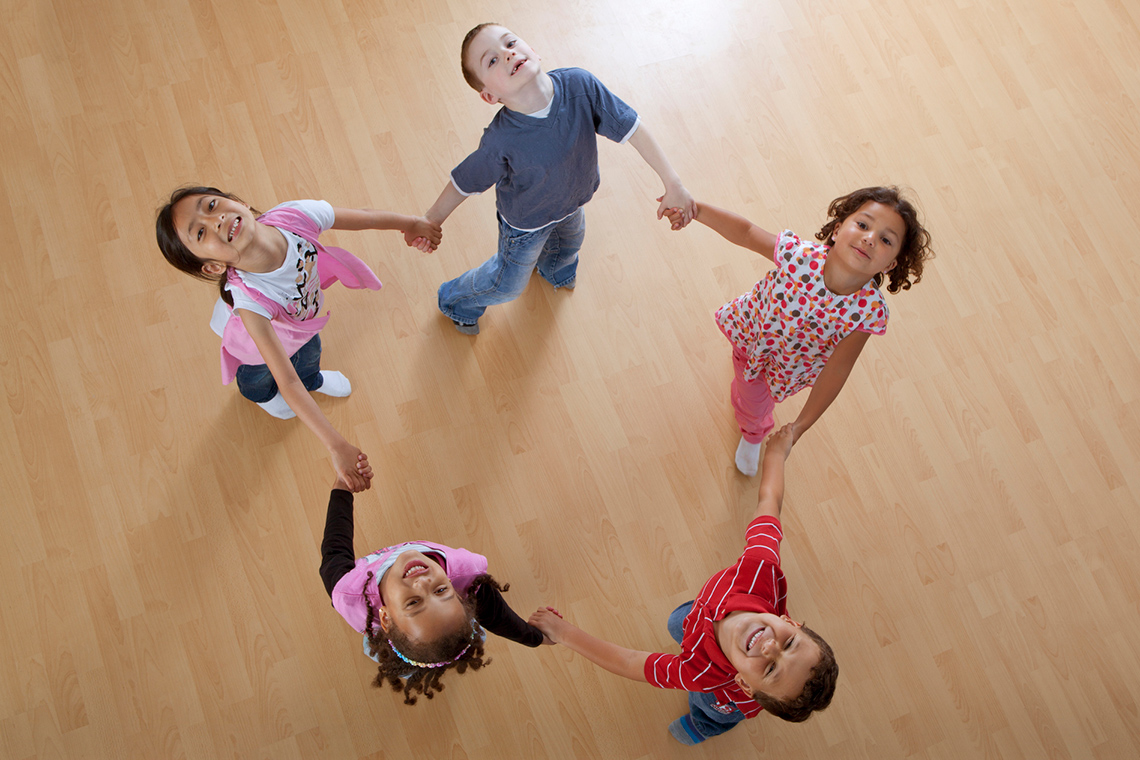
Portfolio
Review your learning
First, choose two dances.
Next, list the elements of body (locomotor and non-locomotor).
- locomotor movements like stepping side-to-side, walking, hopping on one foot, etc.
- non-locomotor movements like turning, waving arms, shuffling, moving head up and down, freeze, etc.
Then, list the elements of space (levels and pathways).
- Levels: high, medium, or low
- Pathways: straight, curvy, or zig zag
Complete the Elements of Two Different Dances in your notebook or using the following fillable and printable document. If you would like, you can use speech-to-text or audio recording tools to record your thoughts. Consider adding your work to your dance portfolio.
|
Choose two dances:
|
|
|
Dance 1: (Blank) |
Dance 2: (Blank) |
|
Locomotor movements: stepping side to side, walking, hopping on one foot, none |
|
|
Dance 1: (Blank) |
Dance 2: (Blank) |
|
Non-locomotor movements: turning, waving arms, shuffling, moving head up and down, freeze |
|
|
Dance 1: (Blank) |
Dance 2: (Blank) |
|
Levels:
|
|
|
Dance 1: (Blank) |
Dance 2: (Blank) |
|
Pathways:
|
|
|
Dance 1: (Blank) |
Dance 2: (Blank) |
Press the ‘Activity’ button to access Elements of Two Different Dances.
Reflection
How do you feel about what you have learned in this activity? Which of the next four sentences best matches how you are feeling about your learning? Press the button that is beside this sentence.
I feel…
Now, record your ideas about your feelings using a voice recorder, speech-to-text, or writing tool.
